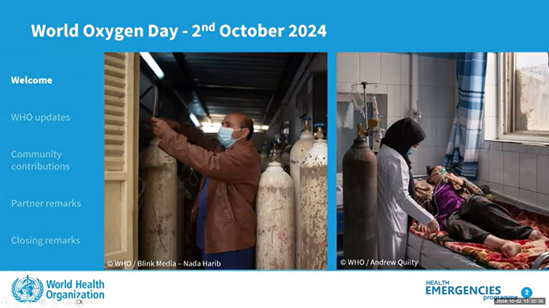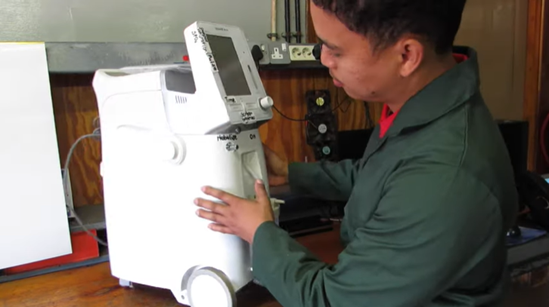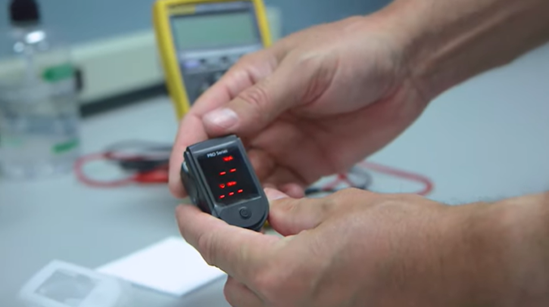COVID-19 vaccines arrive in Afghanistan via COVAX. On 24 March 2021, a nurse working at Shaidayee Hospital in Herat, Afghanistan, treats a patient with oxygen
Oxygen
Oxygen is a life-saving essential medicine with no substitution. Healthcare professionals use oxygen to treat respiratory illnesses like COVID-19 and pneumonia. Oxygen is also essential for surgery and trauma. Vulnerable groups like older people, pregnant women, young infants and newborns need oxygen therapy regularly.
Despite being an essential medicine, oxygen is a complex product. Medicinal oxygen is produced in an industrial process applying good manufacturing practices (GMP) or is generated on-site using oxygen concentrators, which are in many legislations regulated as medical devices. Oxygen also requires a whole system to safely reach patients.
Due to their complexity, access to medical oxygen meets many challenges on availability, quality, affordability, management, supply, human resources capacity and safety. In face of these challenges, WHO continuously develops resources and tools to overcome them.
Surveys in low- and middle-income countries (LMICs) have found that fewer
than half of all health facilities have uninterrupted access to oxygen. It has
been reported that the lack of access to reliable oxygen supplies contributes
to preventable deaths, particularly in LMICs. For example, it has been
estimated that up to 122 000 deaths from childhood pneumonia could be prevented
annually with the strengthening of oxygen supplies. Numerous studies show that
oxygen access is a global problem. For example, a recent study found that among
facilities treating respiratory infections in sub-Saharan Africa, only 1 in 5
had oxygen in Mauritania and 1 in 10 in Niger. Surveys by the United States
Agency for International Development found similar situations for countries in
South America and South Asia. A serious concern at any time, the global medical
oxygen problem has been exacerbated by the COVID-19 pandemic.
Despite being an essential medicine, producing oxygen that is safe for patient use is a complex process since it requires the devices and systems needed to deliver oxygen to patients, ranging from pulse oximeters to ventilators, and health workers that are trained to use such devices effectively. However daunting, the investment of time and resources required to meet oxygen supply demand is worth it. The support for the urgent scale-up of medicinal oxygen will save lives by improving care for people with COVID-19, severe pneumonia and other conditions needing oxygen therapy.
The Access to COVID-19 Tools (ACT) Accelerator, launched in 2020, supported assessment of oxygen needs in low- and middle-income countries (LMICs), and supported funding to increase access to medical oxygen. This was followed in 2023 by the World Health Assembly resolution on Increasing access to medical oxygen, which urges Member States to enhance access with WHO support.
WHO supports Member States to improve access to medical oxygen by:
- deployment of oxygen systems through direct logistical and technical support;
- providing technical guidance to clinical and biomedical engineering professionals (such as technical specifications, and foundations of medical oxygen systems);
- education and training in the appropriate selection, procurement, maintenance, and use of medical devices;
- supporting research to ensure oxygen is most effectively used for patient benefit; and
- development of tools which enable forecasting and decisions related to existing and future oxygen systems.









